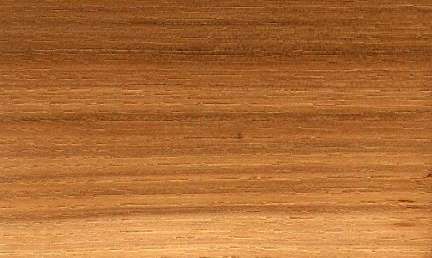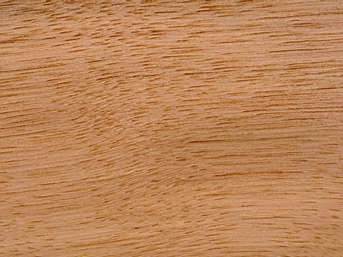 
Mockernut hickory (Carya tomentosa)
Family: Juglandaceae
Common names: Hickory, Mockernut, Mockernut hickory, White hickory
Distributed in: Canada, United States (North America)
Distribution overview: Mockernut hickory is widely distributed from eastern Massachusetts to Florida west across eastern and central New York and northern Ohio to southeastern Iowa, Missouri, southeastern Kansas, eastern Oklahoma, and eastern Texas. The species occupies upland sites on ridges and hillsides. It is a major component of one forest cover type: Northern Red Oak-Mockernut Hickory-Sweetgum. It is a minor component of 4 other forest types: Post Oak-Black Oak; White Oak-Red Oak-Hickory; Beech-Sugar Maple ; and Swamp Chestnut Oak-Cherrybark Oak.
Common uses: Baseball bats, Cabinetmaking, Charcoal, Decorative veneer, Dining-room furniture, Domestic flooring, Fine furniture, Flooring, Fuelwood, Furniture , Furniture components, Handles, Skis, Sporting Goods, Tool handles, Veneer
Environment profile: Status has not been officially assessed
Tree size: Tree height is 20-30 m
Colors: the heart isRed, Reddish brownand the sapwoodClearly differentiated from the heartwood, Pale colored.The grain isWavy, the textureMediumand the lusterMedium
Natural durability: Susceptible to insect attack, Very little natural resistance
Odor: No specific smell or taste
Kiln Schedules: White handles
Drying Defects: Severe shrinkage may result, Slight twist/warp
Ease of Drying: Dries rapidly with little or no degrade
Blunting Effect: Severe effect
Boring: Excellent (95+ pieces out of 100 will yield excellent results)
Cutting Resistance: Satisfactory sawing properties
Gluing: Difficult to glue
Mortising: Good mortising properties
Nailing: Pre-boring recommended
Planing: Special attention required
Resistance to Impregnation: Wood moderately responsive to treatment
Steam bending: Excellent
High bending and crushing strengths, high stiffness and high resistance to shock loads make hickory extremely suitable for steam bending applications
Turning: Good results
Polishing: Good; Staining: Stains well
;
- Numerical data Metric
- Numerical data English
- Strength properties
- References
 |
 |
 |
 |
| Item |
Green |
Dry |
Metric |
| Specific Gravity |
0,6 |
0,65 |
|
| Density |
|
|
kg/m3 |
| Bending Strength |
764 |
1322 |
kg/cm2 |
| Crushing Strength |
55 |
119 |
kg/cm2 |
| Hardness |
|
|
kg |
| Impact Strength |
218 |
190 |
cm |
| Shearing Strength |
|
119 |
kg/cm2 |
| Stiffness |
108 |
152 |
1000 kg/cm2 |
| Tangential Shrinkage |
11 |
|
% |
| Radial Shrinkage |
8 |
|
% |
| Weight |
|
|
kg/m3 |
| Maximum Load |
1,61 |
1,75 |
cm-kg/cm3 |
| Toughness |
|
|
cm-kg |
| Static Bending |
|
|
kg/cm2 |
|
 |  |  |  | | Item | Green | Dry | English | | Bending Strength | 10878 | 18816 | psi | | Crushing Strength | 794 | 1695 | psi | | Impact Strength | 86 | 75 | inches | | Maximum Crushing Strength | 4390 | 8761 | psi | | Shearing Strength | | 1705 | psi | | Stiffness | 1539 | 2176 | 1000 psi | | Work to Maximum Load | 23 | 25 | inch-lbs/in3 | | Specific Gravity | 0.6 | 0.65 | | | Radial Shrinkage | 8 | | % | | Tangential Shrinkage | 11 | | % | | Volumetric Shrinkage | 18 | | % | |
Several species in the genus Carya, including Shellbark (C. laciniosa ), Pignut (C. glabra ), Mockernut (C. tomentosa ), and Shagbark (C. ovata ) are often mixed together and marketed under the trade name Hickory because of very close similarities. Density and other related properties of the species are significantly determined by the rate of growth. Wood with wide growth rings are generally high in density and strength. The wood has very good strength properties in relation to its weight, and is well suited for applications where shock resistance is required. Strength properties are slightly superior to those of European beech (Fagus), but toughness is considerably higher
Boone, R.S., C.J. Kozlik, P.J. Bois and E.M. Wengert. 1988. Dry Kiln Schedules for Commercial Woods: Temperate and Tropical. United States Department of Agriculture, Forest Service, General Technical Report FPL-GTR-57, Forest Products Laboratory, Madison, Wisconsin.HMSO. 1981. Handbook of Hardwoods, 2nd Edition. Revised by R.H. Farmer. Department of the Environment, Building Research Establishment, Princes Risborough Laboratory, Princes Risborough, Aylesbury, Buckinghamshire.Lincoln, W.A. 1986. World Woods in Color. Linden Publishing Co. Inc. Fresno, California.Little, E.L.1980.The Audubon Society Field Guide to North American Trees - Eastern Region.Published by Arthur A. Knopf, New York.Panshin, A.J. and C. deZeeuw. Textbook of Wood Technology. McGraw-Hill Series in Forest Resources. McGraw-Hill Book Company, New York.Rendle, B.J. Editor. 1969. World Timbers, Volume Two - North & South America (Including Central America and the West Indies). Published by Ernest Benn Limited, Bouverie House, Fleet Street, London.USDA. 1987. Wood Handbook - Wood as an Engineering Material. United States Department of Agriculture (USDA, Forest Service, Agriculture Handbook No. 72, Forest Products Laboratory, Madison, Wisconsin.
|









